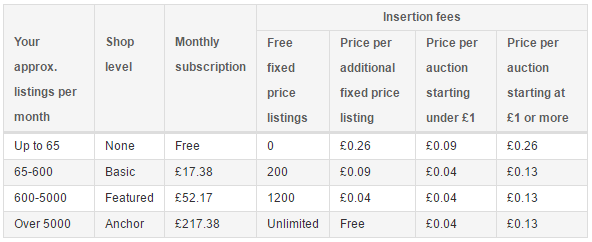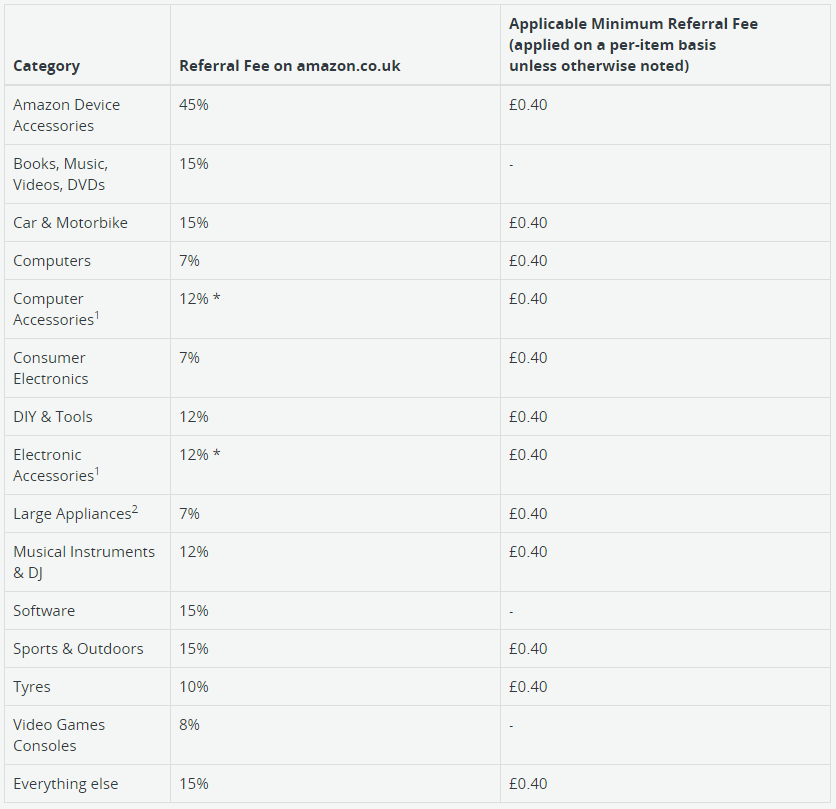eBay vs Amazon
We should start by saying that despite the title of this article being eBay vs Amazon, there’s no actual reason you need to restrict yourself to selling on one or the other, in fact both have its advantages and can offer differing benefits, based on your business area and requirements.
That said, if you are only just starting out with marketplace selling, you might want to choose one to initially focus on, which leads us back to the question – Amazon or eBay?
While both marketplaces can offer significant exposure to a large pool of potential clients, ultimately the decision will be dependent on your business.
To help ensure you are making an informed decision, below we have provided some context into a number of areas, including eBay fees vs Amazon fees, what to sell on Amazon vs what to sell on eBay, as well as a comparison into the appearance and presentation of each.
What to sell on Amazon vs what to sell on eBay.
Unsurprisingly, the first thing to consider is the types of products you sell. While there aren’t many specific limits on either platform as to what can or cannot be sold, other than products such as knives or firearms, both Amazon and eBay are more popular for certain product types and as a result one might be better suited to your business than the other.
As an example, if you sell books or stationery, Amazon would be the better choice, as more customers will be searching for these products on this site. This is because it has a reputation as being the place to go to buy these types of products, and selling them here gives you better odds of a good price and higher sales volumes.
Alternatively, if you are a clothing or fashion jewelry retailer, then eBay would be a better option, as there will be a larger customer base searching for these types of products.
If in doubt as to whether eBay or Amazon is a better fit for your business, simply browse the sites and search for similar products to what you are selling. Don’t only look at how common these products are on each site, but also use this as an opportunity to identify the prices they go for.
eBay fees vs Amazon fees.
All marketplaces have different charges and fee structures, and this is something you should always familiarize yourself with prior to making a decision. With regards to the costs involved when selling on eBay and Amazon, perhaps the most notable difference is that with eBay you actually pay per listing, whereas with Amazon you can pay either a monthly subscription fee of £25 with a Pro Seller account, or alternatively as a Basic Seller, you pay 75p per each item sold.
In other words, this means that with eBay you pay an insertion fee and will be charged, regardless of whether you sell the item or not (although eBay will re-list the item three times free of charge), whereas as a Basic Seller on Amazon, you only pay once the item has been sold.
With eBay, it’s also worth remembering that the cost of listing a product will be dependent on your shop subscription. Below, you can find more details on both eBay’s insertion fees and Amazon’s seller fees.
eBay Insertion Fees and Shop Subscriptions.

*Please note that these fees are designed for business sellers, not personal sellers.
Amazon Basic Seller Fees vs Pro Seller Fees.

Unfortunately, this isn’t where the fees end for either marketplace, and another common cost involved is the fee you pay when your item sells, otherwise known as the final value fee (eBay) and referral fee (Amazon).
eBay final value fee and PayPal fee.
In addition to the insertion fees on eBay, you will also be charged a percentage of the final value you sell the item for. This, however, is also where it gets a bit more complicated, as the percentage will be dependent on the category your item falls under. Below, you can find the accurate percentage for each category type.

Please note there are other things that will influence the cost, including a 10% final value fee discount for eBay top-rated sellers. In addition, international eBay sellers should familiarize themselves with other considerations, which can be found on the fees page on eBay’s seller centre page.
As the majority of eBay customers pay through PayPal, you should also be aware of this fee, which is 3.4% + 20p, calculated on the total transaction amount, including shipping.
Amazon referral fee and variable closing fee.
When selling on Amazon, merchants will be required to pay a referral fee for each item sold. Similar to eBay, this fee will be a percentage of the final value, dependent on product category, however there is a minimum referral fee of £0.40 for the majority of categories.

For more information, please visit the Amazon pricing page.
In addition, Amazon sellers will also have to pay a variable closing fee if they are selling either books, music, videos or DVDs.
So, in summary, there are three typical costs involved with eBay:
- Insertion Fee
- Final Value Fee
- PayPal Fee
In addition, there are 2-3 costs for Amazon sellers:
- Monthly subscription fee or per-item listing fee
- Referral fee
- Variable closing fee (only applicable to sellers of books, music, videos or DVDs)
Do be aware of some other additional charges that you may incur, including any potential fees from your bank or payment provider for accepting international payments, as well as optional listing upgrade fees when selling on eBay.
Appearance and presentation.
This could ultimately be a deciding factor for you. Some people argue that Amazon has a cleaner design, which makes navigation easier. As a result, however, it is often argued that they reduce the influence you, as the seller, have on the appearance of your items and ‘shop’ on their site. Amazon set the design theme and layout, and don’t allow you to make changes to make it uniquely ‘yours’. In that sense, eBay is much more co-operative, giving you a lot more freedom to design and personalize your eBay store, making it stand out.
This means many people find eBay to be more seller-orientated, and this tips many towards using eBay when choosing where to start out. Another thing you should consider, though, is that eBay don’t sell products themselves. By contrast, when selling on Amazon, many people feel they are competing directly with Amazon which can be the case at times.
Final thoughts.
Many top-rated sellers will sell on both platforms (or more!), as well as their own website, which helps them reach a greater audience and, essentially, sell more products. When starting out, of course, you may want to start on only one leading to the Amazon vs eBay debate, but remember that the key thing is to sell on the right channels, not all of them! Choosing correctly is essential for maximizing the return on your investment.
Remember to do your research, and sell the right items, at the right prices, in the right places.